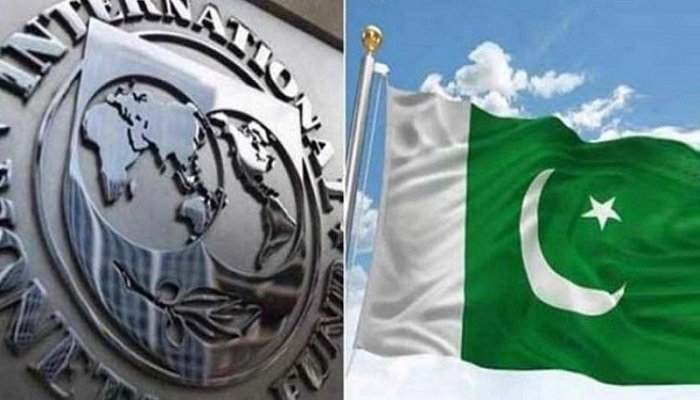The International Monetary Fund (IMF) and Pakistan have finally reached a staff-level agreement on the disbursement of $1.17 billion to bolster the country’s weak economy, the IMF announced Thursday.
According to an IMF release, IMF staff and Pakistani authorities have established a staff level agreement on policies to conclude the combined 7th and 8th reviews of Pakistan’s Extended Fund Facility (EFF). The deal is subject to IMF executive board approval.
It stated that subject to Board approval, about $1,177 million (SDR 894 million) will become available, increasing total program[me] payouts to approximately $4.2 billion.
In June, Pakistan and the Fund staff made significant progress toward reaching an agreement on the budget for 2022-23, after which the IMF released a draught Memorandum of Economic and Financial Policies (MEFP). Pakistan received the MEFP from the IMF for the combined seventh and eighth reviews on June 28, according to Finance Minister Miftah Ismail.
The IMF team, led by Nathan Porter, has completed discussions for the seventh and eighth assessments of Pakistan’s economic program, which is supported by an IMF EFF.
In its statement, the IMF also stated that, in order to support program implementation and meet higher financing needs in FY23, as well as catalyze additional financing, the IMF Board will consider extending the EFF until end-June 2023 and increasing access by SDR 720 million, bringing total access under the EFF to around US$7 billion.
According to the IMF statement, Pakistan is at a crossroads in its economic development. A challenging external environment, combined with procyclical domestic policies, drove domestic demand to unsustainable levels. The resulting economic overheating resulted in huge fiscal and external deficits in FY22, contributed to rising inflation, and destroyed reserve buffers.
According to the international money lender’s statement, the program would stabilize Pakistan’s economy and bring policy actions in line with the IMF-supported program while protecting the vulnerable, policy priorities that include the following
Consistent execution of the FY2023 budget
The budget seeks to minimize the government’s considerable borrowing needs by aiming for an underlying primary surplus of 0.4 percent of GDP, supported by current spending discipline and extensive revenue mobilization efforts aimed mostly at higher-income taxpayers. Development spending will be preserved, and fiscal room will be made for the expansion of social assistance program. The provinces have promised to help the federal government’s efforts to meet the fiscal targets, and each provincial government has signed a Memorandum of Understanding to that effect.
Reforms in the power sector are catching up
Because of poor implementation of the previously agreed-upon plan, the power sector circular debt (CD) flow is predicted to increase dramatically to around PRs 850 billion in FY22, exceeding program targets, endangering the power sector’s viability, and resulting in frequent power outages. To improve the situation in the electricity sector and limit load shedding, the authorities are committed to resuming reforms, including, critically, the timely adjustment of power tariffs, including for the delayed annual rebasing and quarterly adjustments.
Reducing poverty and increasing social safety net
During FY22, the Kafalat unconditional cash transfer (UCT) scheme reached nearly 8 million households, with a permanent increase in the stipend to PRs 14,000 per family, while a one-time cash transfer of PRs 2,000 (Sasta Fuel Sasta Diesel, SFSD) was granted to approximately 8.6 million families to offset the impact of rampant inflation. The authorities have committed PRs 364 billion to BISP for FY23 (up from PRs 250 billion in FY22) in order to bring 9 million families into the BISP safety net and to expand the SFSD plan to additional non-BISP, lower-middle class recipients.
The establishment of a strong electronic asset disclosure system
In June, headline inflation hit 20 percent, impacting the most disadvantaged people the most. The recent monetary policy boost was reasonable and necessary in this regard, and future monetary policy must be designed to ensure that inflation is slowly brought down to the medium-term goal of 5-7 percent. Importantly, the rates of the two main refinancing schemes, EFS and LTFF, which have recently increased by 700 bps and 500 bps respectively, will continue to be linked to the policy rate to improve the transmission of monetary policy. More flexible exchange rates will help to moderate activity and restock reserves at more responsible levels.
Improve governance
To improve governance and reduce corruption, the authorities are putting in place a robust electronic asset declaration system and intend to conduct a thorough review of anticorruption institutions (including the National Accountability Bureau) to improve their effectiveness in investigating and prosecuting corruption cases.
The IMF delegation also commended Pakistan’s authorities, private sector, and development partners for successful discussions and collaboration during the program’s revival negotiations.
Mahnur is MS(development Studies)Student at NUST University, completed BS Hons in Eng Literature. Content Writer, Policy analyst, Climate Change specialist, Teacher, HR Recruiter.










